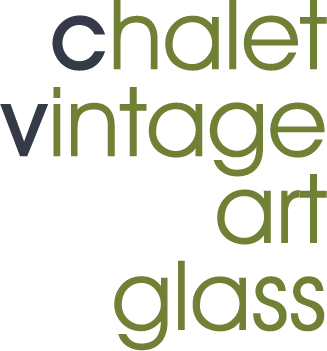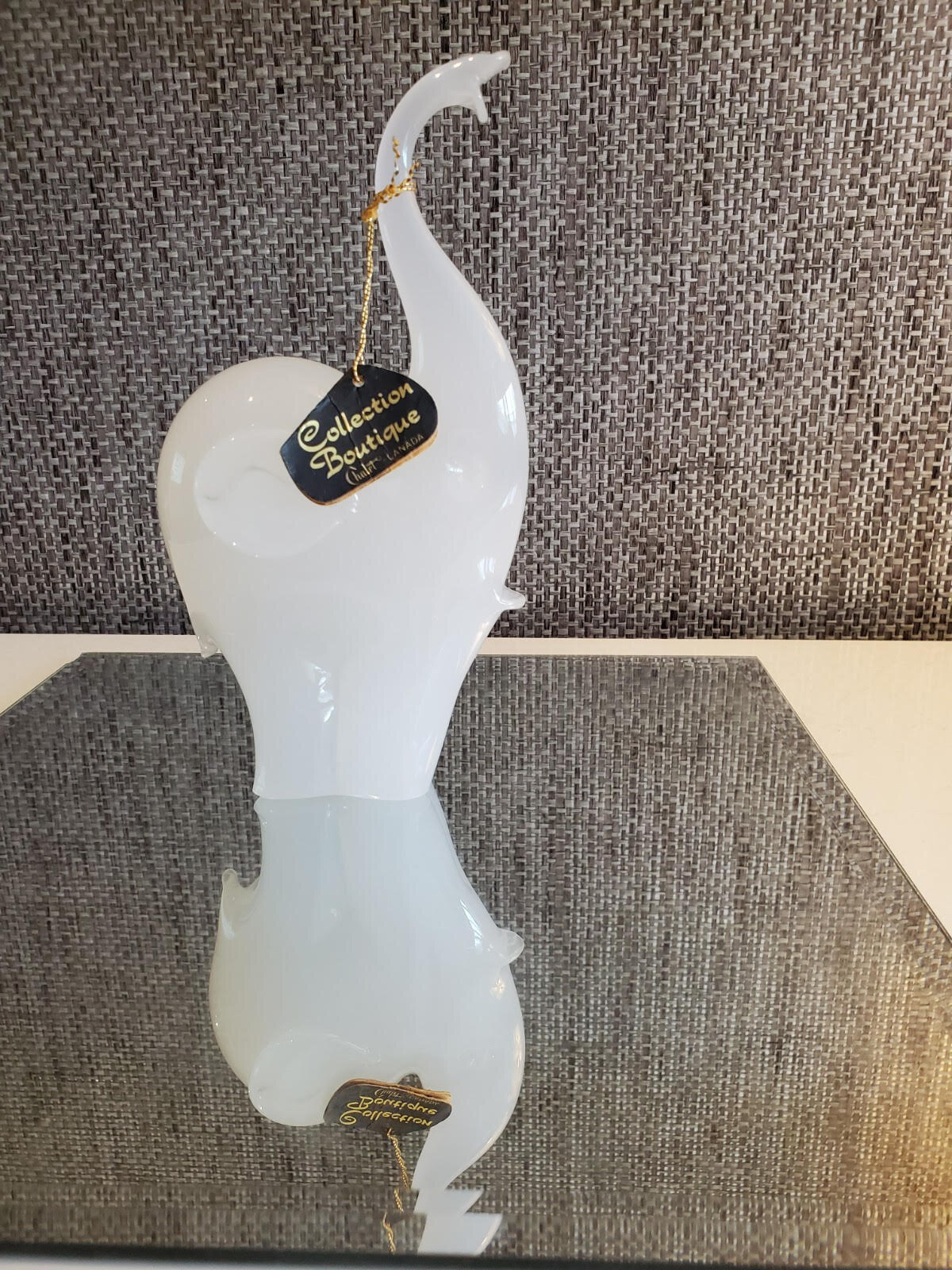Chalet Opaline Pieces
I always wonder from where the “inspiration” for my next article will come. I shouldn’t ever fuss because they come fast and furious lately. Picking up a Chalet mouth blown vase and meeting Jean Paul and Jennifer Voltolina (son and daughter-on-law of Chalet Maestro Giovanni Voltolina) made writing the last one, Chalet Mouth Blown Pieces, a snap! And this past weekend, having to my home 50 Shades members Troy and Teresa Danby made this one a breeze as well. Why? Troy brought a ‘tote-full’ of pieces that I was dying to meet in person. His photographs had been great but nothing beats seeing rare pieces that you have never “met” before in person! You will see what I mean in a minute as some of his pieces photographed with some of mine gave me the idea of doing an article on Chalet’s use of opaline.
What is “opaline” and how was this type of glass made? It is NOT an ‘at end’ surface finish. Rather, lead arsenate was added to clear crystal molten glass mixture in the vat to create a milky, white appearance. The clear glass loses its transparency and becomes opaque. Opaline glass was used to not only create 2 complete and distinctive hand moulded lines but also some very memorable stand-alone pieces. To date, there have been no large hand-blown Chalet opaline pieces found. However, we have discovered a very few opaline bomboniere. And - most incredibly, amazing animal figurines in pure opaline as well as ones in unusual multi-coloured tones.
We’ll start with another look at the more familiar – the Chalet’s “End of Day” and “Opal with Gold Flecking” lined. Both used opaline glass but in very different ways.
Like the “Canadiana Heritage Glass”, the “Canadiana Cranberry” and the “Opal with Gold Flecking” lines, . Chalet’s “End of Day” pieces are hand moulded. Distinctive with their opaline and cranberry overshot, artists started working by blowing clear crystal glass into a mould. Pieces were then finished by hand working “overshot” – a piece would be rolled over a steel plate which was covered with thousands of very small pieces of glass. The shards of cranberry and opaline adhered to the larger gather of glass. These glass shards were very sharp - sharp enough that they could cut hands at the slightest touch. The piece was then returned to the ovens and reheated which melted the small pieces of glass. This melting caused them to lose their sharpness. It was then worked by hand into a desired shape. This produced a separation between the pieces of glass. The difference varies from one piece to the other, depending on the size of the piece. The finished surface of the glass is smooth but textured and both the cranberry and opaline remain distinctive each other and from the clear glass.
Chalet’s naming of this line is tongue-in-cheek. Usually the ‘end of day’ reference in glass refers to random pieces made from materials that remained at ‘end of day.’ However, Chalet’s line was scheduled production work and pieces were produced within those parameters and not at random. These pieces were typically given a 4-sided gold and red hang tag or a N.C. Cameron and Sons sticker.
Forms from the “Opal with Gold Flecking” line are also hand-moulded and share some commonality with “End of Day” pieces in that opaline and cranberry is used. As well, as with Chalet’s other cranberry lines, the decorative use of applied handles, petal feet and prunts is widespread.
However, Chalet used opaline and cranberry glass in these 2 lines very differently. For this line, the artists also started working by blowing glass into moulds but it was opaline glass not clear crystal. In addition, at end, a fine cranberry powder, not shards, was spread on steel sheets. The pieces were then carefully positioned and rolled in this. As the pieces turned, the “splatter” effect was achieved. Limitation of cranberry application was deliberate as Chalet wanted this line to be totally distinctive from the textured “End of Day” line. The “splatter” pattern and colour varies from one piece to another in the forms in this line. The finished surface of the glass is smooth not textured and the sides of the piece and its base retain the mould markings.
The marking for this line is a bit confusing. In Canada, it was distributed by N.C. Cameron and Sons so was often given the same hang tag as the “End of Day” line although they are completely different in appearance. In the United States, it was distributed by Riekes Crisa and marketed as “Opal with Gold Flecking” and stickered with a label. “Opal with Gold Flecking” was not a popular line for Chalet. These pieces are found frequently enough not to be considered rare but they are scarce and can be quite a size. Please also note that Rossi also produced a line which closely copies this Chalet’s product in both forms and colour. However, the differences are obvious as the Chalet pieces are of markedly higher quality - see photo at end of this section..
I saved the best till last - let’s examine the very rare stand-alone pieces. They will really surprise you. Let’s take a look. Be prepared for mouth drops!
The bomboniere we have found to date:
These opaline fish (foreground) and bird bomboniere forms are also found in the typical coloured glass.
Photo courtesy of 50 Shades member Brad McGillivray
Photograph courtesy of Pam Petten.
This Chantili stickered bombonierte is not only opaline but also has the gasoline wash surface finish which gives it its irradato (opalescent) shine.
Lastly, here are the very few opaline animal figurines we know of to date. All are etched with the ‘Chalet Canada’ signature with the exception of the elephant which retains the exceedingly rare ‘Boutique Collection’ hang tag. I have also seen an opaline elephant that did have the etched signature. So, we do know they can be marked with at least 2 brandings.
Opaline polar bear and elephant from the collection of Deborah Patterson.
This multi-coloured rooster figurine is from the collection of 50 Shades member Troy Danby. Photograph courtesy of Troy Danby.
When 2 collectors get together and a tree falls in the forest- do their pieces have a party? Yes! My elephant and bear were simply delighted to have the company of Troy’s rooster and cat. It was hard to get them back into their display at evening end.
This multi-coloured cat figurine is from the collection of 50 Shades member Troy Danby. Photograph courtesy of Troy Danby.
























